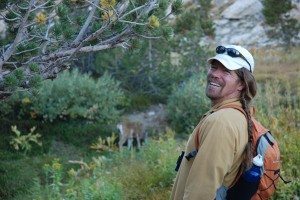Bay Area Birds, by David Lukas
By Phila Rogers
When I first opened this dense volume, I wondered: “Do I really need another bird book?” It’s a rhetorical question, of course, because I seldom can resist, whether it’s yet another guide book or a personal account of a birding life.
David Lukas’ Bay Area Birds (Lukas Guides, 2012) is jam-packed with information written to compliment your field guide. These days, I do as much reading about birds as going into the field to find them. With winter residents beginning to show up, I want to know more about the birds I’m hearing and seeing.
For each of 221 species, Lukas devotes often several paragraphs to what he calls their “Life History” and a shorter account to “Range.”
The only illustration is a map showing his definition of “The Bay Area Region.” He divides the coastal mountains into the outer and inner coast ranges, including the Berkeley-Oakland hills as part of the inner coast range. In my experience, this is not where they belong. Their location opposite the Golden Gate creates a climate and habitat similar to the damper ranges along the coast.
That aside, Lukas gives himself an impressive mantel of authority by acknowledging the help of such notables in the birding community as Bob Richmond (who read the manuscript) and Rich Stallcup who gave his “papal blessing” to the project.
He gives one of the fullest, most interesting, treatments to one of our drabbest and most common resident birds — the California Towhee. I like that. For instance:
“Their habit of feeding on the open ground, along with their accommodating acceptance of humans, means they are a conspicuous presence around countless backyards, suburban neighborhoods, and city parks…. Pairs are highly sedentary and mate for life.”
Bay Area Birds has many interesting tidbits of information — Gnatcatchers pair up within 24 hours of their arrival on territory; Bufflehead are small enough to nest in tree cavities made by Northern Flickers; adult Wild Turkeys are reported to eat one pound of food per meal.
However, Lukas does not give sources for his information, which means the reader is asked to take his word. What I like about Cornell’s Birds of North America Online is they back up descriptions with citations giving the researcher’s name and date of their paper so you can dig deeper.
Before writing my review, I passed the book on to an expert birding friend who was trained as a scientist. He had the same problem with unidentified sources. He also missed having something that provided a graphic overview.
“How about a table of breeding birds, or a bar chart showing arrival times, departure times, habitat codes?” he asked.
I would settle for symbols with each species telling me whether it is a year-round, winter or summer resident, rather than having to glean the information from the text to find out these things.
Still, I enjoyed reading about familiar birds, discovering interesting new facts, and hoping Lukas was right.
At $20, I will add this book to my ever-expanding collection.
—————————————-
David Lukas grew up on the Oregon coast, where he started studying natural history at the age of five. He has worked on biological research projects as far away as Borneo and the Amazon. After teaching nature programs in Marin County for four years, David recently moved back to the Sierra Nevada and now lives on 10 acres just outside of Yosemite National Park.
Bay Area Birds can be ordered from Lukas’ web site at http://www.lukasguides.com. It is also available as a Kindle e-book.


